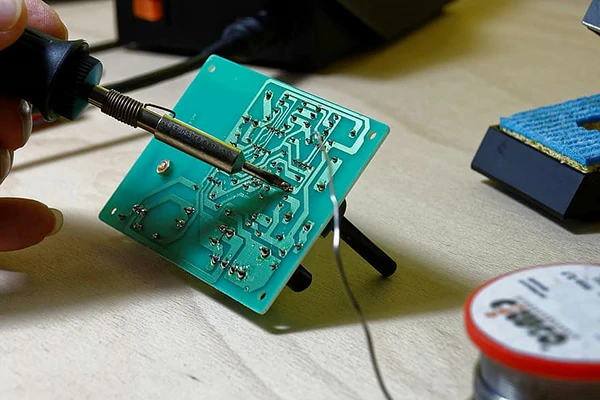
Have you ever wanted to build your own keyboard, fix a broken headphone jack, or create a DIY circuit for your home automation project? If so, you'll need to understand the basics of soldering and desoldering. While both involve working with solder, they have different purposes and require different techniques.

Soldering is like gluing metal parts together using a special metal called solder. When heated, the solder melts and joins the parts, creating a strong and conductive connection.
Soldering is used to connect wires, resistors, capacitors, and other components to a circuit board, ensuring they work together properly.
You'll need a soldering iron or a soldering station, solder, and flux. The type of solder and flux you use will depend on the project you're working on.
There are different ways to solder, including hand soldering, wave soldering, and reflow soldering. Each method has its own advantages and disadvantages, depending on the complexity of the project.
Use the right tools for the job, practice good technique, and avoid overheating the components.

Desoldering is like ungluing metal parts. It involves melting the solder and removing it from the joint, allowing you to replace a faulty component or modify a circuit.
Desoldering is necessary when you need to replace a damaged component, change a circuit, or salvage parts from old electronics.
You can use a desoldering pump, desoldering braid, hot air station, or desoldering iron. Each tool has a specific function and is suitable for different situations.
There are two main types of desoldering: wick desoldering and solder sucker desoldering. Wick desoldering uses a special braid to absorb the molten solder, while a solder sucker uses a vacuum to remove it.
Be patient, use the right tools, and avoid damaging the circuit board or surrounding components.
Building a custom keyboard, repairing a broken headphone jack, or creating a DIY circuit for a home automation project.
Replacing a faulty capacitor on a motherboard, removing a damaged LED from a circuit board, or salvaging components from an old smartphone.
Understanding the differences and applications of soldering and desoldering will help you tackle your electronics projects with confidence. Remember to always use the right tools for the job, practice good technique, and prioritize safety when working with electronics. With a little practice, you'll be able to solder and desolder like a pro!
 WhatsApp
WhatsApp